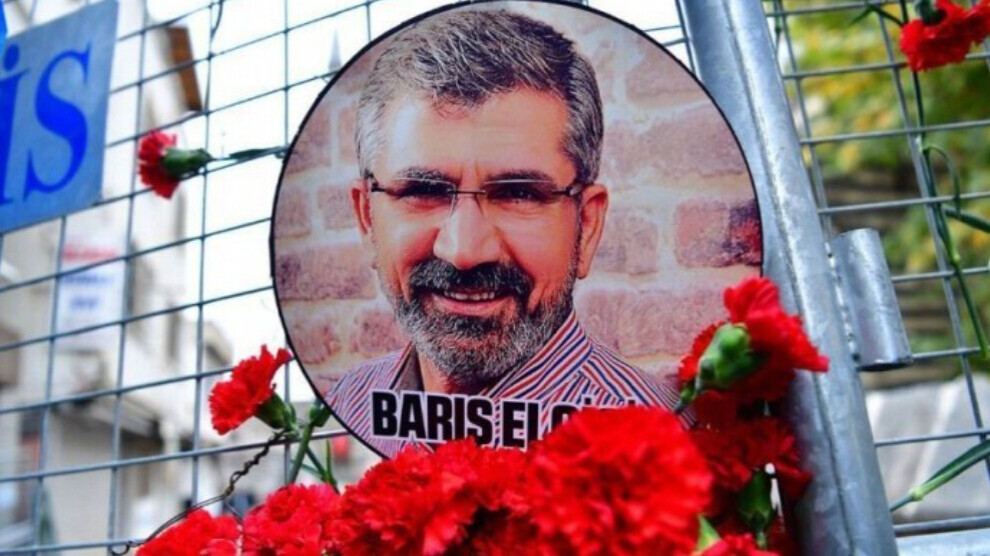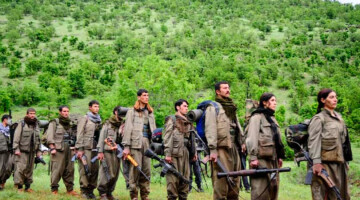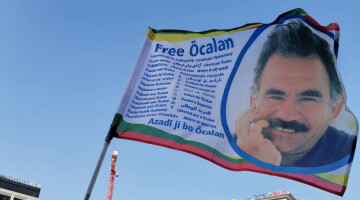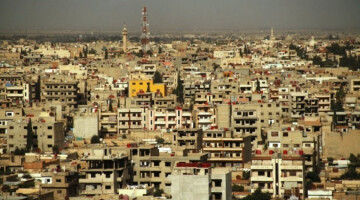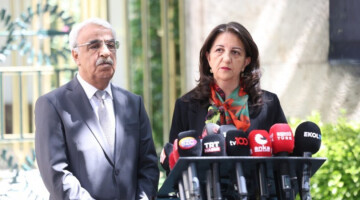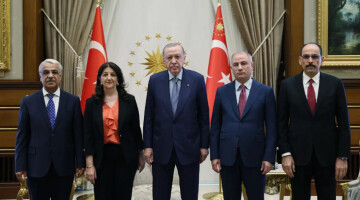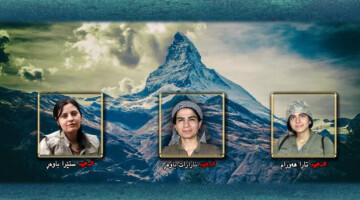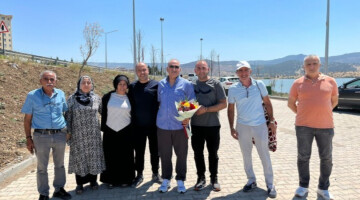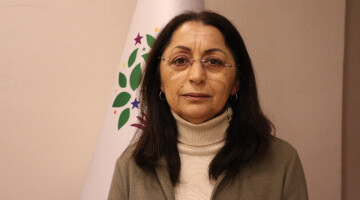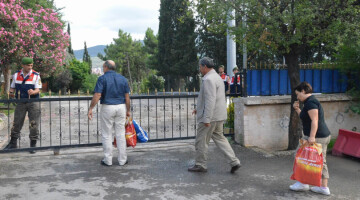Three police officers charged with involuntary manslaughter have been acquitted in the trial on the murder of Kurdish human rights lawyer Tahir Elçi. The 10th High Criminal Court in Amed (Diyarbakir) on Wednesday followed the prosecution's request, which stated that Tahir Elçi had been killed by a bullet whose origin could not be determined.
Tahir Elçi, the former president of the Diyarbakır Bar Association, was shot deat in Amed (Diyarbakır) eight years ago. The Kurdish human rights lawyer was the target of massive lynching after he had participated in the 'Neutral Zone' program presented by Ahmet Hakan at CNN Türk on 14 October 2015. Asked by Hakan whether the PKK was a terrorist organization, Elçi answered: "The PKK is not a terrorist organization, but an armed political movement whose political demands enjoy great support among the people." Elçi was arrested shortly afterwards and only released on conditional release. On 28 November 2015, he was shot dead during a press conference in front of the ‘four-legged minaret’, a historic building that had been damaged during the Turkish military blockade in Sur. Immediately before his death, Tahir Elçi appealed for peace in the region. "In this area, which was home to so many civilisations, we want no gunfire, no violence and no operations," he said, then shots were fired. He was hit in the head by a bullet and died on the spot. At the time, curfews were in place in a number of Kurdish cities as part of the military siege, including the district of Sur. As a result, many places were literally razed to the ground.
The government immediately claimed that the Civil Defence Units (YPS) ‘and therefore the PKK’ had shot the lawyer. However, case reconstruction specialists from the art and research agency ‘Forensic Architecture’, an initiative affiliated with the Institute of Architecture at Goldsmiths University in London, established through a video reconstruction completed in February 2019 that only three police officers could be the perpetrators. One of them was ‘certainly’ the perpetrator.
Another year and a half had to pass before charges were brought against police officers Sinan Tabur, Fuat Tan and Mesut Sevgi in October 2020 - for ‘involuntary manslaughter’. The officers remained on duty despite the charges. In the same trial, YPS member Uğur Yakışır was charged with the murder of Tahir Elçi and two police officers and the attempted destruction of the unity and integrity of the state.
The last hearing in the trial took place on 6 March and there were many new developments. Witnesses who had testified during the investigation phase that the murder of Tahir Elçi was planned by the PKK and that the fatal shot was fired by YPS members Mahsum Gürkan or Uğur Yakışır denied their testimonies in court. Witness Recep Özbek said: “I was in prison on the day of the murder and was angry with Mahsum Gürkan because of some of his behaviour. That's why I testified that he killed him.”
Another witness, Deniz Ataş, said that he signed a prefabricated statement out of fear. He said he had been tortured and a public prosecutor had promised to release him, otherwise he would be killed: “I was scared and signed the statement without reading it. I don't even know who Tahir Elçi is." The recantation of both witness statements was ignored by the court.
A lawyer defending oppressed people
Tahir Elçi was born in Cizre, Şırnak in 1966. He completed his primary, secondary and high school education in Cizre, and graduated from Dicle University, Faculty of Law in 1991.
He worked as a self-employed lawyer in Amed since 1992. Between 1998 and 2006, he worked as a manager in Amed Bar Association. During this period, he studied international criminal law and criminal proceedings at the Academy of European Law in Germany and attended many national and international conferences as a speaker.
He represented victims in many domestic trials and before the domestic courts and the European Court of Human Rights (ECHR). He was a member of Turkey Bar Association (TBB), Human Rights Center for Science Advisory Board, Human Rights Foundation of Turkey (TIHV) Founding Committee and was involved in the establishment and operation of several civil society organizations. Elected as the President of the Bar Association of Amed in 2012, he continued his duty until 28 November 2015, the day he was murdered.
Ahmet Şık, an investigative reporter previously jailed by the Turkish government and now HDP deputy for Istanbul, had written on Twitter: “They chose to murder Tahir Elçi, instead of arresting him”.
His words were to be proved dramatically true.
28 November 2015: A planned murder
On 28 November 2015, Tahir Elçi, a prominent Kurdish human rights lawyer, was shot and killed during a press conference in the city of Diyarbakır in south-east Turkey. It was 10.53 when Elçi was shot at the Four Legged Minaret with a bullet in the back of his neck.
At the press conference, Elçi had appealed for calm in the city, amid a recent wave of violence. The weeks and months following his death, however, saw an escalation in the conflict that resulted in the near-total destruction of Diyarbakır’s historic centre, Sur, a historic resistance, the deaths of hundreds of civilians and the displacement of thousands more.
In a public address on the day of the murder, then Turkey’s Prime Minister, Ahmet Davutoğlu, pledged to apprehend the "unknown perpetrators", and promised that the state’s investigation would uncover the truth. "Politically-motivated assassinations", he added, "would not be tolerated".
Yet why was the PM delivering his speech, promising to catch the killers, the authorities were failing (was it deliberate? One cannot but think it was, unfortunately) to secure or process the crime scene. They blamed the ongoing clashes in the area, and when investigators returned two days later and began collecting evidence, their work lasted very little.
In the end, the investigators gathered 43 pieces of evidence that had previously been identified and labelled for collection. Forty further pieces, from the area immediately around the base of the minaret, where Elçi was murdered, were not collected. Photographs and footage show civilians walking around the murder scene, which was clearly compromised.
Indeed, the bullet that killed Elçi was never recovered. It was only four months later, in March 2016, that investigators returned to carry out a new two-day examination of the murder scene.
Possibly even more disturbing was the fact that the police officers who could clearly be seen firing their weapons in Elçi’s direction at the press conference were never questioned as potential suspects, only as witnesses.
London University report: Police shot Elçi
Later in 2016, the Diyarbakır Bar Association commissioned London university Goldsmiths research group Forensic Architecture to examine the evidence in their possession. That included witness testimony, video footage, photographs and material from the crime scene investigation, and official and independent reports.
One of the first accusations made by the government was that, in fact, Elçi had been killed by PKK militants who were armed at the scene that day.
However, Forensic Architecture dismissed this claim with a rigorous reconstruction of what happened that day. The report said: "The results of our analysis confirm with near-certainty that neither of the PKK militants could have fired the shot that killed Elçi. In fact, for much of the time frame during which Elçi was hit, Gürkan was clearly holding his gun by the barrel, and thus unable to shoot. Yakışır does not appear to aim at Elçi at any point during the time frame, and eventually throws his gun at the police."
Forensic Architecture then concluded: "Based on our analysis, we concluded that police officers A and D had direct but partially obstructed lines of fire towards Elçi during the period in which they are visibly firing their weapons. Either could therefore have fired the fatal shot.
Police officer C is the only officer to have had a clear unobstructed line of sight towards Tahir Elçi, during the period in which he fired shots 24, 26, 28, and 29. He, too, could have fired the fatal shot."
Was Elçi given medical attention?
According to Forensic Architecture, "following the shooting, one of the four cameras continued to record for around 13 minutes. Throughout this time, as shots rang out intermittently from nearby streets, Elçi’s body lay on the ground unattended; nobody in the vicinity attempted to check his condition, or to give him medical attention. [...] 12 minutes and 30 seconds after the end of the investigative time frame – an armoured vehicle arrives, parking just centimetres from Elçi’s body. Shortly afterward, the camera stops recording."

